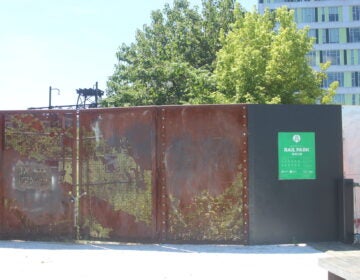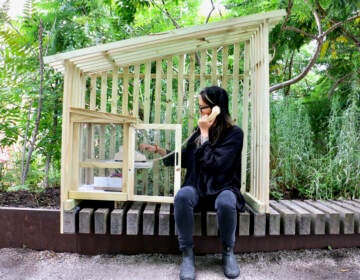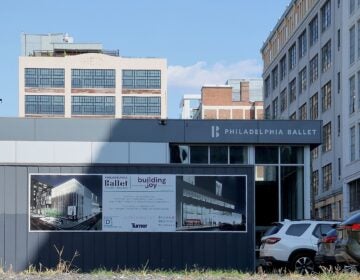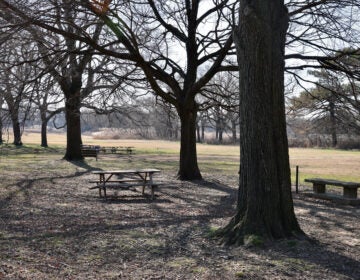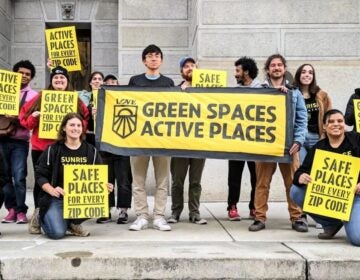Philly’s Rail Park raises millions for next phase from state, federal grants
Organizers expect to complete the next step in turning the Reading Railroad Viaduct into a park in a few months, but there’s a long way to go.
Have a question about Philly’s neighborhoods or the systems that shape them? PlanPhilly reporters want to hear from you! Ask us a question or send us a story idea you think we should cover.
Ambitious plans to transform the next section of an old railroad property into a public park with sweeping views of Philadelphia are one step closer to reality after the Center City District was awarded both state and federal grants for the project.
In 2018, the first section of the Rail Park that sits above city streets and runs from 13th and Noble streets to Callowhill Street opened to the public as the first green space in the neighborhood.
But that elevated park ends after a quarter of a mile, and the rest of the structure that stretches from Fairmount Avenue to Vine Street, once known as the Ninth Street Branch, is behind locked gates.
Callowhill Neighborhood Association board president Sarah McEneaney has lived in the neighborhood since 1979 and rode the train to Spring Garden before it stopped running in 1984.
The Reading Railroad Viaduct can be difficult to visualize without visiting the train trestle, which is what community members did for years, trespassing on private property before the public park opened, McEneaney said.
“A lot of people couldn’t understand [the park] until they got up there and saw it,” she said.
While it’s taken more than a decade of work to get the first section of the park opened, McEneaney said she’s hopeful the viaduct greenway will be completed in her lifetime.
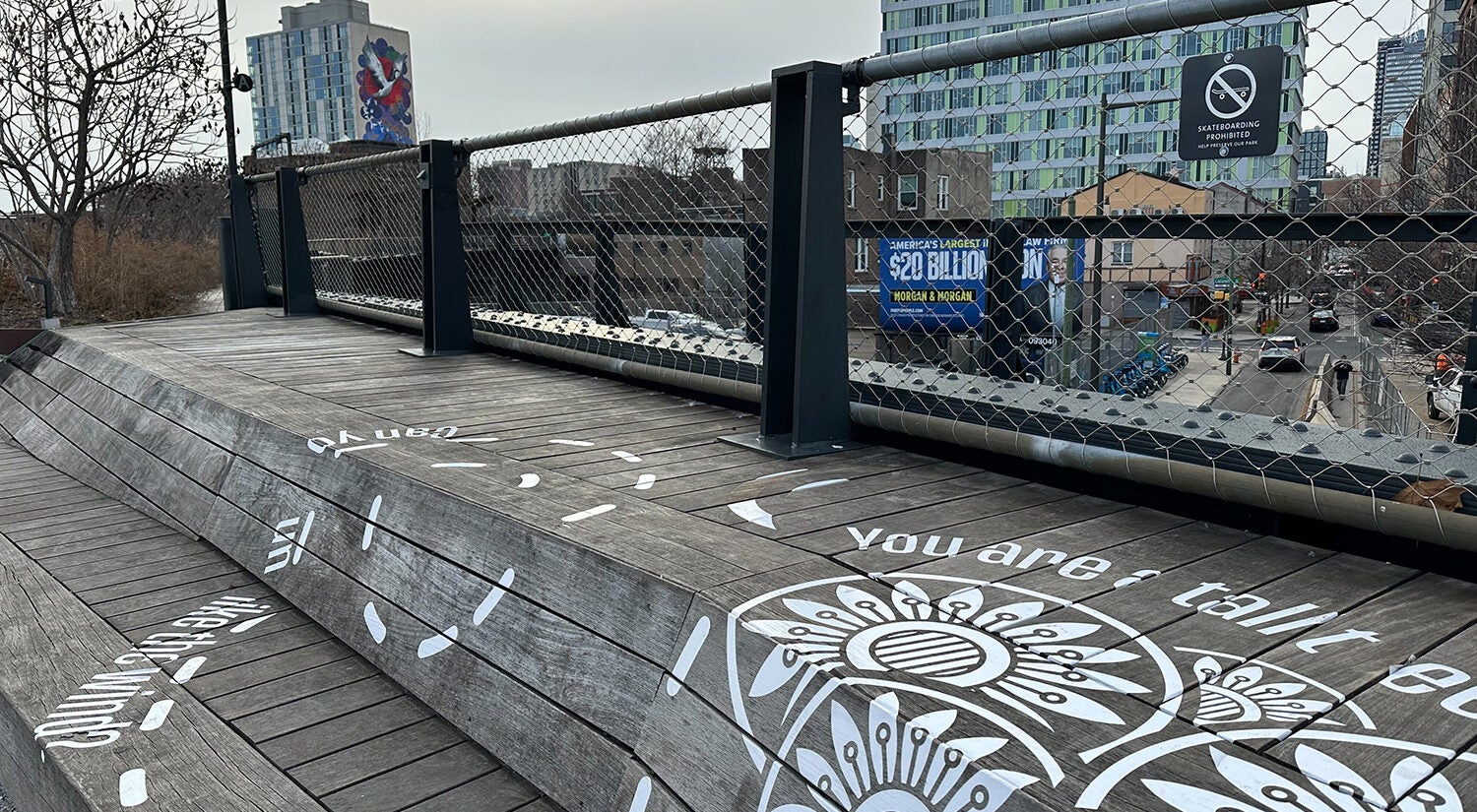
A long way to reality
The goal is to raise about $60 million to renovate the next section of the Rail Park. The funds would pay for land acquisition, environmental remediation and park improvements such as trail, lighting and safety considerations.
Center City District Board Chair Paul Levy said the organization has raised about $4.5 million from both public and private sources, such as the William Penn Foundation, Poor Richard’s Charitable Trust, the Wyncote Foundation, Connelly Foundation and PECO.
Center City District was recently awarded another $475,000 from the state and $2 million from the federal government for that next section. That’s enough money to complete construction bid documents by April 2025.
“This is dead center in the middle of the city. If you think about it, this was the rail line that fed the Reading Terminal and brought people in by one mode,” Levy said. “We really want to update it for the walkable, bikeable city of the 21st century.”
The recent state money stems from the Pennsylvania Department of Community and Economic Development. It’s a slice of the city’s $6 million share of legal gaming revenues that support public interest projects.
The new federal support comes from the U.S. Department of Transportation, through the Bipartisan Infrastructure Law, after advocacy from U.S. Rep. Brendan Boyle. The grant is part of the Reconnecting Communities program that is meant to address previous harm by “past transportation decisions that divided communities, paved over once-thriving neighborhoods, and limited economic opportunity.”
Boyle said that communities across the country are working to turn old rail lines into public parks.
“This project will connect neighborhoods, improve access to key destinations, and give residents more green spaces to enjoy,” Boyle said in a press release.
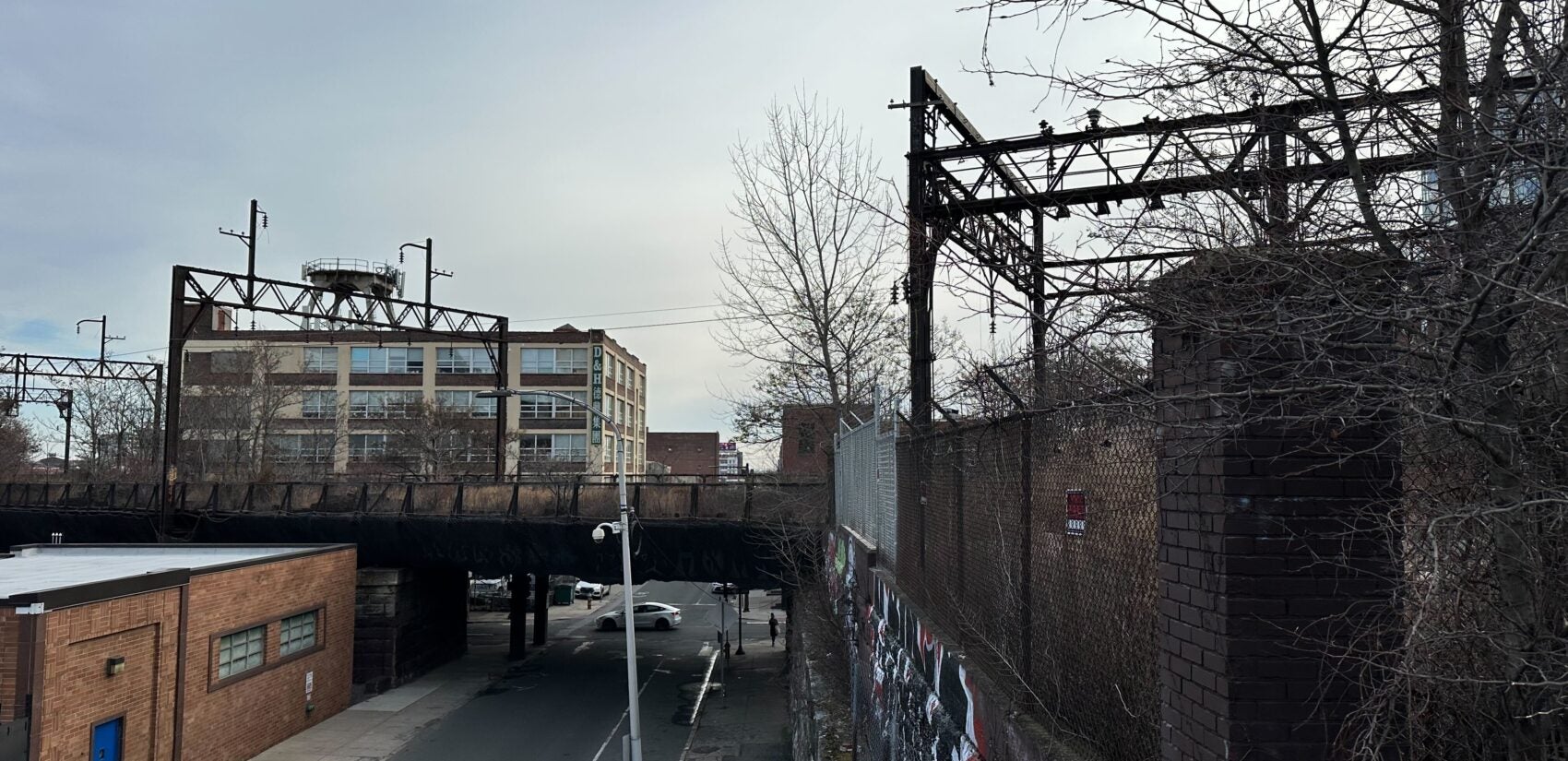
Repairing divided communities
One such possibility is reconnecting Chinatown, which was separated into north and south halves when construction of the Vine Street Expressway began in the 1960s.
“When you look at Chinatown North, you can see a visible difference in the types of buildings and the uses because Vine Street is such a wide physical barrier, but it’s also a mental barrier,” said John Chin, executive director of the Philadelphia Chinatown Development Corporation.
Chin said that his organization is working with Center City District to ensure that the effects of gentrification do not push out longtime residents.
“We recognize that and we don’t want that to happen here,” he said.
They are exploring building more affordable housing and creating land trusts, which may include deed restrictions to protect the land from market rate housing projects.
The recent momentum around fundraising for the Rail Park is a good sign, as Chin envisions that it could help get some potential funders off the sidelines.
A railroad without tracks
The old Reading Railroad Viaduct was built more than 100 years ago, but has been abandoned for the past 40 years, with no trains running. At one point, the tracks were removed.
It is roughly 6.8 acres of brownfields that extend for more than half a mile. The renovation will require environmental remediation of lead and other toxic materials, structural repairs to the steel and masonry bridges, and a linear trail with lighting that will extend all the way to the I-676 Vine Street Expressway Stitch project, which will reconnect the community of Chinatown.
Center City District hired Urban Engineers and Studio Bryan Hanes to lead engineering for the Rail Park’s second phase and Connect the Dots Insights to lead a community engagement process that’s already been completed.
The viaduct and 23 adjacent land parcels are owned by Reading International, which primarily runs movie theaters, but scooped up the railroad assets out of bankruptcy decades ago. City property records show the value of the adjacent land to the viaduct is worth about $717,900.
Reading International did not respond to interview requests from WHYY News.
“I don’t want to raise expectations that it will be done next year, but we’re in very good shape,” Levy said. “We have a lot of money to [still] raise to build the park and we have a healthy negotiation process to go through with Reading [International].”
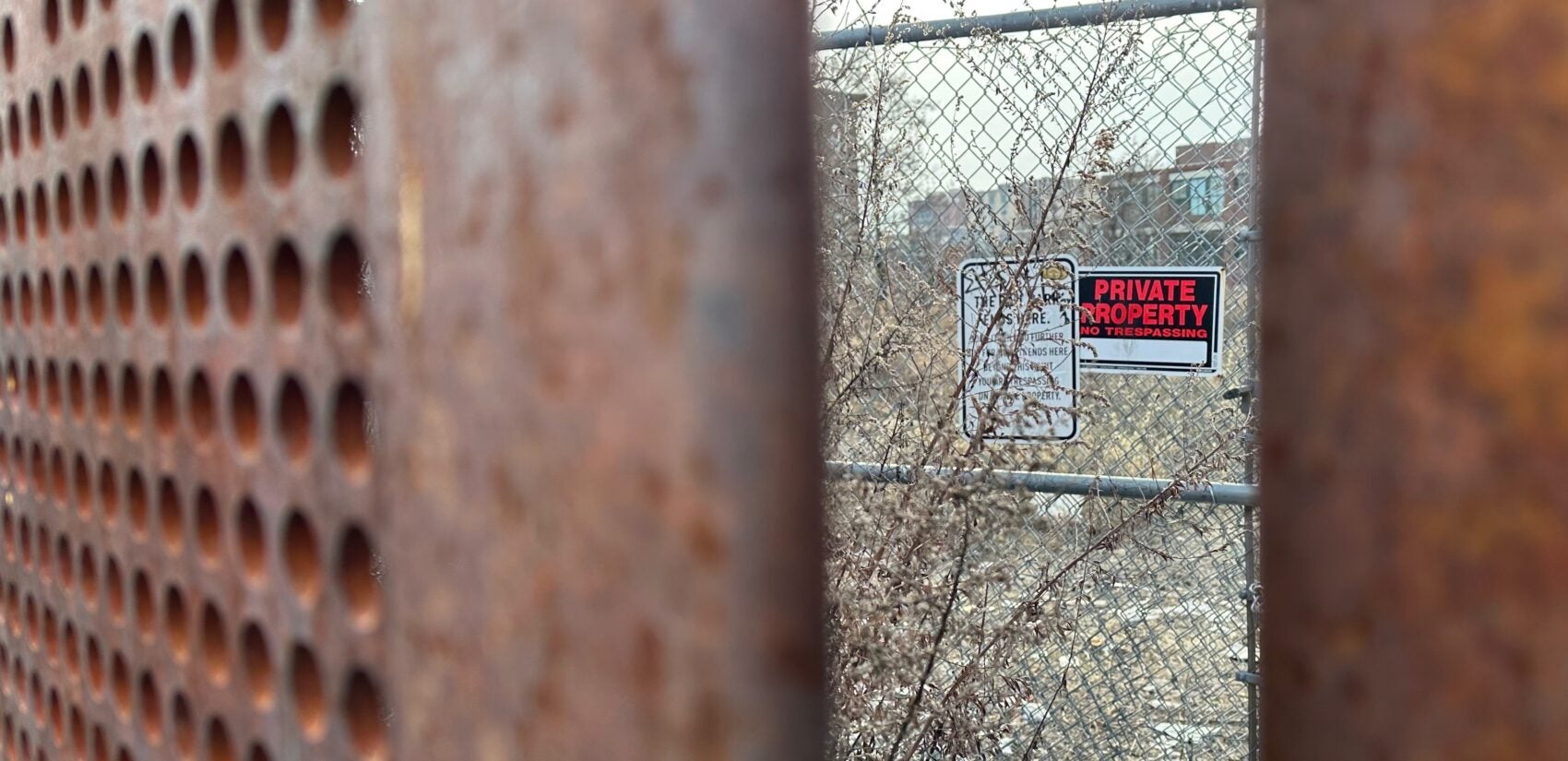
Yet another wrinkle over control
The city of Philadelphia has already empowered itself to condemn the railroad property, but it has not yet done so. Instead, it is clearing the legal path.
That strategy includes a case before the federal Surface Transportation Board, filed in March 2024, where the city is asking the federal board to declare the railroad abandoned, which would remove its protections against municipal condemnation.
Right now, the land is protected under old railroad laws, even though the tracks have been removed and it’s not connected to rail lines on either end.
Reading International has fought that federal agency case so far. It argues that the railroad is not abandoned but simply discontinued and therefore, the protections should stay in place.
At one point, Reading International told investors in public filings that it was interested in a public-private partnership, but wanted to sell the land for $50 million.
“We are evaluating whether a dedicated public park is the highest and best use of the Reading Viaduct,” Reading International told investors. “We are in the process of determining the best use, which may include a mixed-use development featuring residential, retail and entertainment uses. We believe a park and pedestrian corridor would be complementary to the overall development of our property.”
The negotiations between the Center City District and Reading International are going at a “snail’s pace,” Levy said. The goal is to get the construction documents completed so when the parties go back to the table there’s a concrete plan with expected costs and community and foundation support.
“It won’t just be a set of beautiful renderings. It will be a fully designed park where we actually know the costs,” he said.
A Greenway Viaduct
The community groups involved in the Rail Park planning process include the Philadelphia Chinatown Development Corporation, Callowhill Neighbors Association, Friends of the Rail Park, West Poplar Neighbors and the 14th Ward Registered Community Organization, as well as Philadelphia Councilmember Mark Squilla.
“Right now, there’s no large outdoor space in our neighborhood for people to go,” said Gerald Shoemaker, Jr., president of the West Poplar neighborhood association.
So the next phase of the Rail Park would bring green space. There are already local businesses that could benefit.
“One of the closest businesses is Triple Bottom Brewing, which has been in our neighborhood for a while now and they’ll have easy access in and out of the Rail Park so people can stop there,” Shoemaker said.
Rebecca Cordes Chan, executive director of Friends of the Rail Park, estimates that once the public park is complete, it could connect 10 Philadelphia neighborhoods — from the Museum of Art to Chinatown — opening an accessible public green space to 100,000 people.
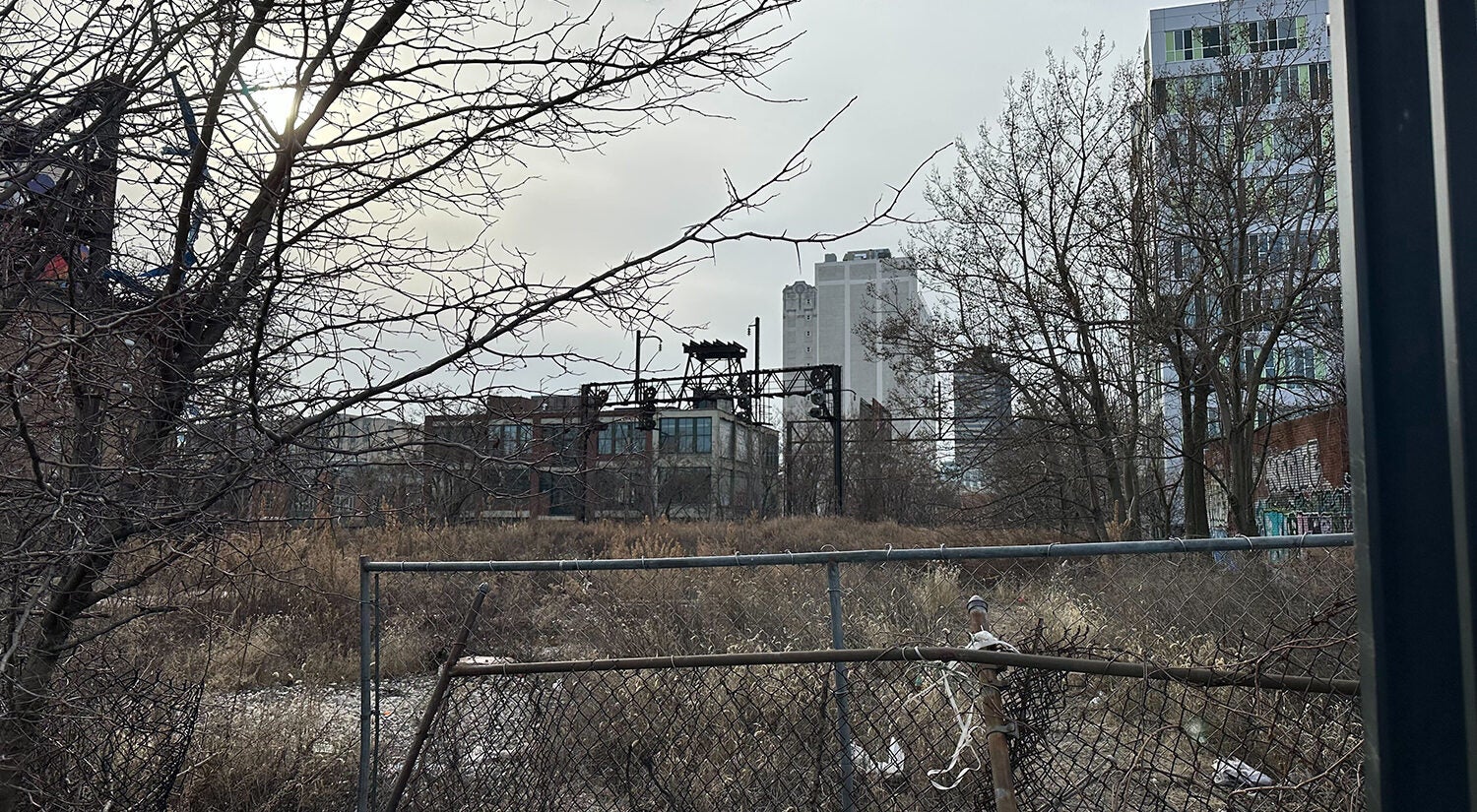
This year, the Friends of the Rail Park is starting an equitable development plan that will explore what effects the park will have on neighborhoods and ways to mitigate gentrification. The group already explored accessibility issues and solutions at the existing Rail Park.
Cordes Chan said she thinks a third phase of the Rail Park — which includes the old Reading Railroad’s City Branch line that runs between 30th and 13th streets and is controlled by SEPTA — could be developed before the second phase, which would cost $30 million to renovate.
The Friends of the Rail Park submitted a request to SEPTA for an information document outlining what’s possible in that section.
“SEPTA has been in discussions with the Friends of the Rail Park to explore a potential agreement to allow the City Branch section, known as ‘The Cut,’ to be developed into an additional phase of the Rail Park,” according to a statement from the transit operator. “SEPTA recognizes the success that the first phase has achieved, and the benefits of having activated open space within the city that provides safe access to our transit options.”
The first phase of the Rail Park is leased to the city of Philadelphia from SEPTA, too.
“To me, [the city branch] is a much more viable path forward because we have a willing partner,” Cordes Chan said. “I think the [city branch] can happen in my lifetime.”

Subscribe to PlanPhilly
WHYY is your source for fact-based, in-depth journalism and information. As a nonprofit organization, we rely on financial support from readers like you. Please give today.



